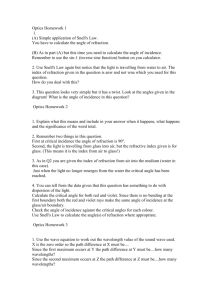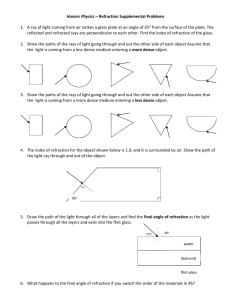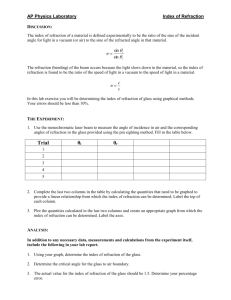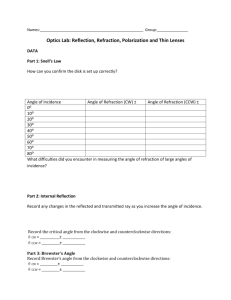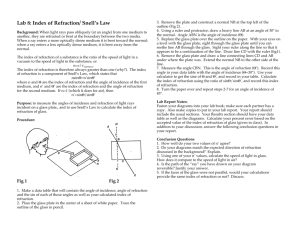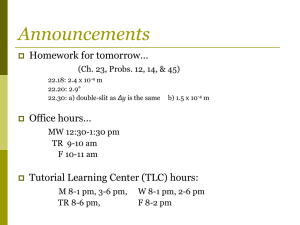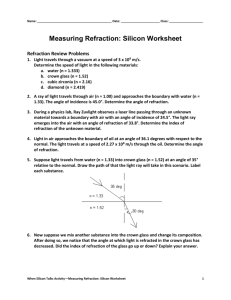Snells law lab conclusion Claim – What did you find the index of
advertisement
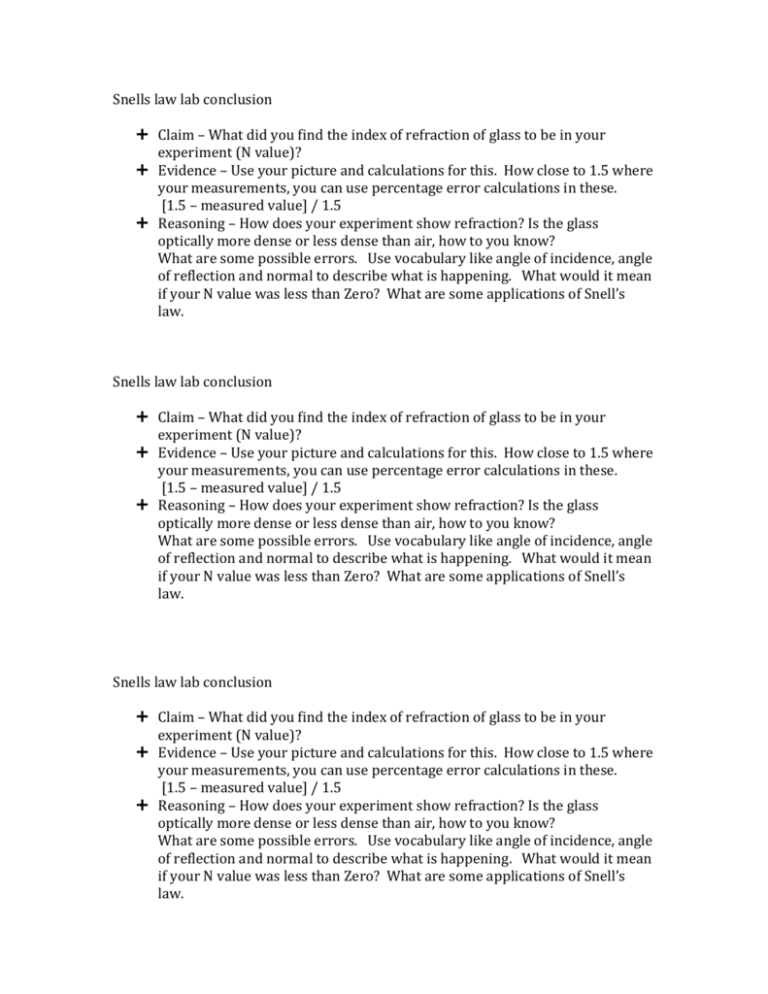
Snells law lab conclusion Claim – What did you find the index of refraction of glass to be in your experiment (N value)? Evidence – Use your picture and calculations for this. How close to 1.5 where your measurements, you can use percentage error calculations in these. [1.5 – measured value] / 1.5 Reasoning – How does your experiment show refraction? Is the glass optically more dense or less dense than air, how to you know? What are some possible errors. Use vocabulary like angle of incidence, angle of reflection and normal to describe what is happening. What would it mean if your N value was less than Zero? What are some applications of Snell’s law. Snells law lab conclusion Claim – What did you find the index of refraction of glass to be in your experiment (N value)? Evidence – Use your picture and calculations for this. How close to 1.5 where your measurements, you can use percentage error calculations in these. [1.5 – measured value] / 1.5 Reasoning – How does your experiment show refraction? Is the glass optically more dense or less dense than air, how to you know? What are some possible errors. Use vocabulary like angle of incidence, angle of reflection and normal to describe what is happening. What would it mean if your N value was less than Zero? What are some applications of Snell’s law. Snells law lab conclusion Claim – What did you find the index of refraction of glass to be in your experiment (N value)? Evidence – Use your picture and calculations for this. How close to 1.5 where your measurements, you can use percentage error calculations in these. [1.5 – measured value] / 1.5 Reasoning – How does your experiment show refraction? Is the glass optically more dense or less dense than air, how to you know? What are some possible errors. Use vocabulary like angle of incidence, angle of reflection and normal to describe what is happening. What would it mean if your N value was less than Zero? What are some applications of Snell’s law.



